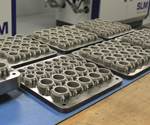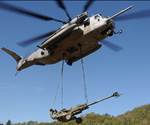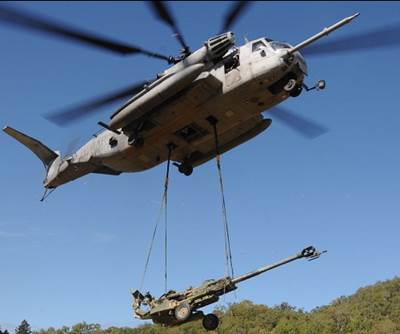The Logistical Value of AM
3D printing can permit a radical change in the geometry of a part. Have we yet seen the extent to which it might change that part’s point of production?
The design possibilities offered by additive manufacturing are getting to be well-understood. Or at least well-recognized. Just how to design for additive is still unclear to many, but in concept, I feel it’s now widely known that 3D-printing-style processes open the door to manufacturing elaborate forms. Engineers in general are beginning to confront the possibilities of the geometric freedoms.
By contrast, I do not feel that manufacturers to the same extent have yet recognized the potential logistical freedoms.
The military recognizes this. I recently had the chance to learn about military leaders’ thinking regarding the logistical power of 3D printing. The context was somewhat confidential, so I’ll be vague. But it is not hard to see the value of additive in supplying a deployed military force. Rather than the current model of factory-to-foxhole for supplying troops in the field—that is, the model of the 20th century’s wars—3D printing instead offer the possibility of far-forward manufacturing of at least some components. Like a MASH unit we know from the old television show (a mobile army surgical hospital), think of a “MAMS” unit, a mobile army manufacturing shop. (The military will come up with a cooler term.) In place of hardware being shipped from far away and stored in a warehouse that is still far from the front line, the digital file alone could simply be sent to one of these units closest to the soldiers in need, for additive fabrication of an urgently required component. The lead time, shipping cost, inventory requirements and transport vulnerability could all be overcome. And while it is the military pursuing these aims, all of these factors would be valuable to overcome in a non-military context as well.
Indeed, in the purely commercial context, AM brings other benefits as well. Since pricing and scheduling an additive build is largely a function of the CAD model and the material choice, these steps are easier to perform in AM than in other manufacturing processes. Pricing and scheduling can be more purely automated. Integrating supply chains and ordering parts automatically thus become easier to realize.
What would it take to get to this logistically efficient model? That is, what would be required before we can see nimble, short-run manufacturing sites producing parts far away from their designer but very near to their users? The military has a wish list. Their requirements would include faster 3D printing speeds (of course), along with digital networking into an automated system that tracks component use and wear, and anticipates manufacturing requirements. Also: use of recycled materials. In the field, it would be nice to grind up an empty ammo can and make the needed part from this.
Commercial manufacturers wouldn’t need that last requirement for their own widely dispersed production. However, they have a special requirement all their own: IP protection. In a model in which manufacturing is dispersed, the manufacturing expertise will not be—it will be centralized. An engineer in the home office will ensure that the company’s product is 3D printed to the same standards and methodology in all of the different sites all over the world, meaning these requirements will be embedded into the way he or she constructs the digital model. In short, there will not just be design intelligence in the digital file sent far away (that’s valuable enough), but there will be manufacturing intelligence in this file as well. As a result, while AM stands ready to disrupt logistics, manufacturers will need data security first.
Related Content
With Electrochemical Additive Manufacturing (ECAM), Cooling Technology Is Advancing by Degrees
San Diego-based Fabric8Labs is applying electroplating chemistries and DLP-style machines to 3D print cold plates for the semiconductor industry in pure copper. These complex geometries combined with the rise of liquid cooling systems promise significant improvements for thermal management.
Read MoreMachine Tool Drawbar Made With Additive Manufacturing Saves DMG MORI 90% Lead Time and 67% CO2 Emission
A new production process for the multimetal drawbar replaces an outsourced plating step with directed energy deposition, performing this DED along with roughing, finishing and grinding on a single machine.
Read MoreActivArmor Casts and Splints Are Shifting to Point-of-Care 3D Printing
ActivArmor offers individualized, 3D printed casts and splints for various diagnoses. The company is in the process of shifting to point-of-care printing and aims to promote positive healing outcomes and improved hygienics with customized support devices.
Read MoreVideo: 5" Diameter Navy Artillery Rounds Made Through Robot Directed Energy Deposition (DED) Instead of Forging
Big Metal Additive conceives additive manufacturing production factory making hundreds of Navy projectile housings per day.
Read MoreRead Next
With Additive Manufacturing, No Tooling Is Required
In conventional manufacturing methods, tooling can easily cost hundreds of thousands of dollars. With AM, you print as needed, no jigs, fixtures or tooling required.
Read MoreHow Do You Make a Howitzer Less Heavy?
Large nuts that used to be solid metal are now grown with a honeycomb structure on the inside for valuable weight savings.
Read MorePostprocessing Steps and Costs for Metal 3D Printing
When your metal part is done 3D printing, you just pull it out of the machine and start using it, right? Not exactly.
Read More





















